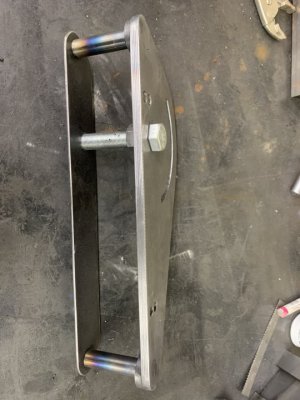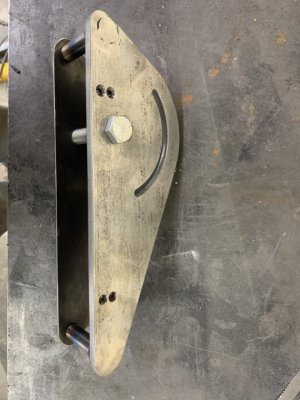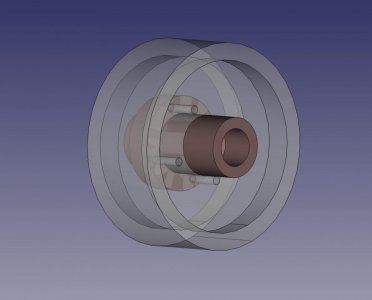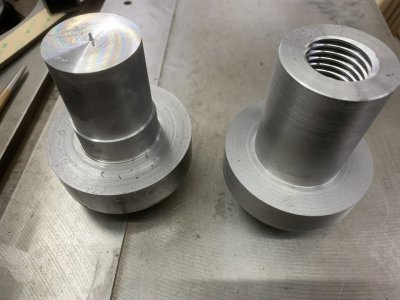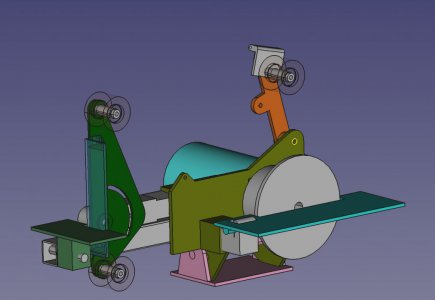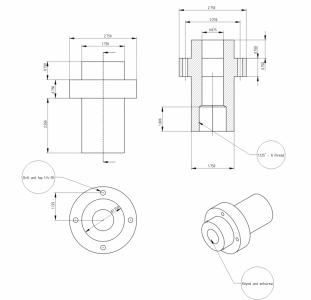Daily photobomb
I made another shaft to replace the one with the less than satisfactory finish. Of course it is the last one I need, but I finally got the setup on the lathe in a way that made it relatively easy to cut, using the tools I have on hand. Thanks to
@woodchucker,
@WobblyHand and
@jwmay's suggestions, I did use a parting tool to turn about 1/4" of the shaft. This was certainly more feasible in my mind than turning a whole 2.5" that I was struggling with in the above config with the tailstock and steady rest.
I chucked up a roughly 7" piece of 1.5" dia 1018 in the chuck, with about 4" sticking out, to make a 3" finished part. I cut the right hand side with a RH WNMG tool, up to the large shoulder. I used that same tool to turn the large shoulder and about 1" beyond it to finished size (1.25").
Then I used a parting blade to bring about .30" beyond the large shoulder down to .750" (finished size). I did that as a combination of multiple plunges, and then some turning at about .005" cut to get it down to size.
The problem with that approach is that I ended up with left side of the shoulder a bit tapered rather than a 90 degree face. That face is critical as it registers against the base plate to keep the shaft square when welded in, so it needs to be a clean 90 face. I tried a couple time to plunge the parting tool in, or turn up to the shoulder, right on dimension, but I could see the parting tool start to bend off to the left. So I used a left hand hss 1/4" facing tool to fix that shoulder, then back to the parting tool to actually part it.
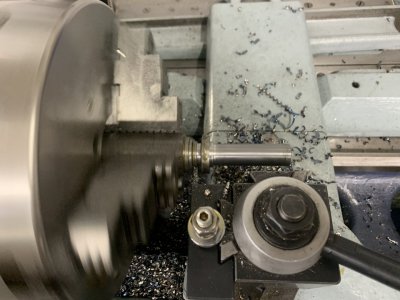
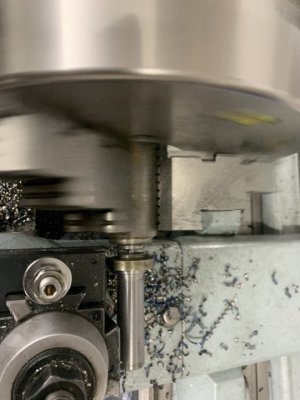
Then I flipped it around and cleaned up the parted face with CNMG tool. Note that there was a bit of runout on the part, but just facing the end off that isn't critical. It did make the deburring chamfers a little sloppy. Then I flipped it back to sand the part to a final bearing fit. For anything other than the initial chuck configuration, these where barely tightened in the chuck to prevent damage. For the sanding pass I put the tailstock in the 3/8" bolt hole that had already been drilled and tapped in the initial setup. Note sure you can tell the difference in the picture, but the finished and fit on the one on the left works (this last setup), the bad one is on the right.
Anyway, it was an interesting combination of working with both carbide and HSS that made this work, two of each. Certainly it could have been done with all of one or the other. In this case it worked out quite well to mix them, the carbide inserts allowed me to quickly get from 1.5" to .75" over a 2.5" length, while the HSS allowed me to get into the narrow working area without extending the stock out farther and using more stock to work into that shoulder. Certainly it could have been done with either all HSS or all inserts, but this worked best for me.
I think there is a lot of skill and experience to getting a feel for what you can do with each type of tool, so that you can come up with good setups. Cutting flipped parts always creates questions of runout, a 4 jaw chuck can minimize those, but in this case I cut all of the critical surfaces in the same setup, which regardless of the chuck type, gives you the minimum issues with runout.
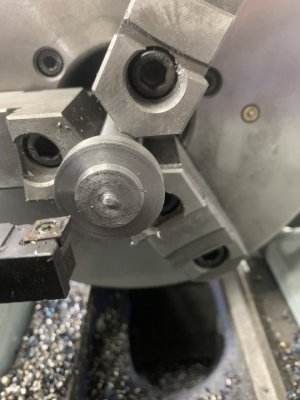
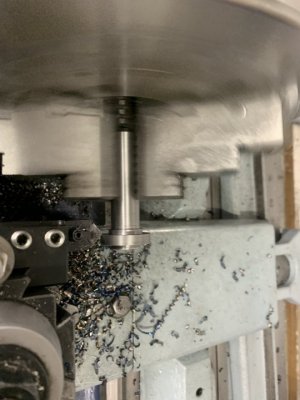
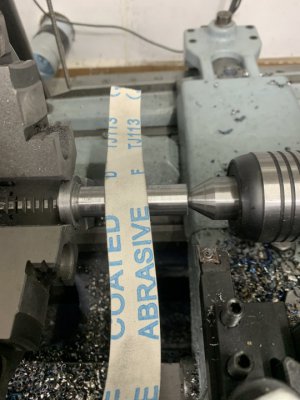
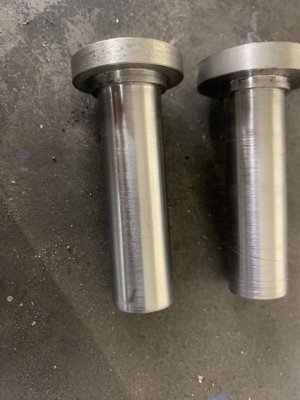
I wanted to make sure these shafts were set perpendicular to the plate. I believe this will be critical to belt tracking.
Bolting these to the plate would allow that. But I was sort of set on welding it. Bolt heads would create a clearance issue with the support arm, flat head screws with counter sunk bolts would solve that. But in my mind there is some merit in learning to combine machining with welding, and to explore the limits of that. Obviously the problem is welding risks heat and cooling contraction pulling the shafts out of square. The large shoulders and plug welds help to alleviate that, but help is not "gaurantee". I made up a 1/8" x 2" piece of flat (rectangular) stock to support the ends of the shafts, and reference the 3/4" pivot bolt. I pressed the shafts into the plate and then clamped it to the bench and welded it up.
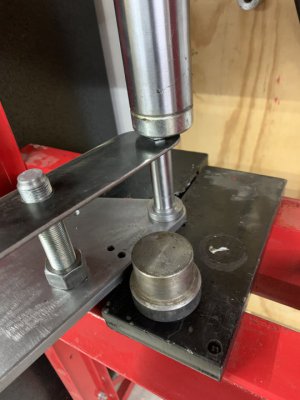
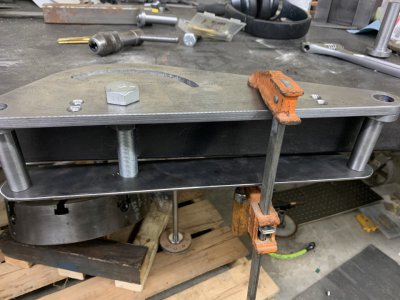
I used the TIG welder to start the plug welds, first to just tack them and check square, but that was really pushing the top end of my TIG welder and going slow. So after getting a good root around the perimeter of the plug with the TIG, I filled it in with the MIG. Here's some pictures after grinder the welds clean. You can see a bit of undercut on the top of the second picture, so it wouldn't pass a weld inspection but I doubt it'll be an issue here. I left this cooling, I'll make up the other aluminum wheel and assemble this with wheels on the arm next.
